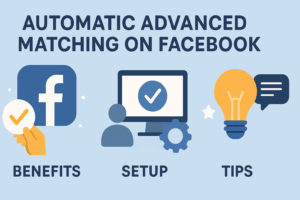Have you been considering re-platforming but have held off for fear of the time it may take or the costs you may incur? Perhaps you’re afraid of choosing the wrong new platform or failing to implement it effectively, knowing how much it could hurt your business if you do.
Or maybe you’re not sure that you can get it done in-house with the expertise you have, and if you outsource the project, you have no idea how to get started.
It’s understandable if these or other similar concerns have held you back from even broaching the idea. And if the sunk costs of your current system are high, you may resent the very idea of moving to a new platform.
But re-platforming may be the crucial next step you need to take to grow your business. In some cases, re-platforming may be the key to ensuring your competition doesn’t put you out of business.
Reasons to Re-platform
Many firms come to realize that they need to discard the e-commerce platform they’re using to maintain or grow their operations. You may need to re-platform if:
- Your legacy platform system has begun to fail and is more costly to maintain than to replace
- Your old system is slow, hard to navigate and search, and limited in the content you can provide, resulting in a bad customer experience
- You can’t optimize your platform for mobile, which is problematic given that half of consumers use their smartphone for purchases
- You’re working to move your operations from on-premise to the cloud
- Your firm has merged with another, and you need to consolidate systems
- You need integration with other third-party systems, such as payment processors or analytics applications, your current platform can’t handle
- You can’t effectively address security threats on your existing platform
- You can’t scale your platform to match your growth
- You need a fresh-looking website, and your current platform’s design options are limited
These are all excellent reasons to re-platform — reasons that may justify the time, effort, and money involved. Re-platforming, while necessary, also carries a good deal of risk. And while some large brick-and-mortar businesses may be able to absorb the losses from a temporary outage of their online storefront, online-only firms and hybrid companies that primarily earn money online may find such an outage catastrophic.
To avoid any downtime in your e-commerce, it’s essential to understand the most significant risks when re-platforming. There are many, including:
- Selecting the wrong new platform
- Not properly accounting for all use cases or the right ones
- Developing cumbersome systems architecture
- Not having the right expertise in-house to re-platform
Further Reading:
Five Common Data Migration Problems
On top of these, the data migration process is the area with the most potential pain points. A botched migration will wreak havoc on your bottom line, so it’s critical that you not only establish a comprehensive data migration plan but that you do so in collaboration with all other relevant key stakeholders, who can help you identify pain points you missed. Make sure you include timelines, benchmarks, and responsibilities in your plan as well. Failing to do so can result in:
Incorrect Mapping
Your new platform may display one product description or image and link to another entirely. Or your customization options for one product may display on all product pages. If you go live with your new platform without adequate testing, identification, and remediation of these issues, your customer experience — and sales will suffer. You must have a comprehensive plan and the time and internal resources to properly migrate your data.
Data Loss
You also must prepare for the possibility of data loss. While some data loss may be inconsequential, losing some types of data, like customer data, will prove costly. Before beginning the data migration process, you must have a set of backup mechanisms in place on-site or in the cloud.
Avoid so-called “forklift” migrations where you shut down your site for a period and migrate your data over. Instead, establish a parallel or swing environment — one where you continue to use the old system while you migrate data to the new platform on a temporary server. When your new system’s data migration is complete, tested, and ready for operation, then you can swap one out for the other. Handling your data migration in this fashion can help you identify data loss errors and correct them before your new system goes live.
Compatibility Challenges
Migrating data can create access problems down the road, as some data types may no longer be readable when placed in certain environments. Further, some new platform features may not be compatible with other internal systems, slowing down operations. Your overall data migration plan must account for the various data types and other internal systems. It also should include strategies for testing, identifying, and addressing compatibility issues before your new system goes live. Again, utilizing parallel environments can help you avoid troublesome accessibility issues down the road.
Inaccurate Customer Data
Along with the possibility of customer data loss comes the potential of customer data corruption. Suddenly, your customer names appear in the wrong fields, are missing entirely, or have been replaced with a string of random characters. We don’t have to tell you what this means for your business. To make sure this does not cripple your e-commerce efforts, make sure you have robust back-ups in place.
Potential Loss of SERP Position
Not only have you spent considerable time building and maintaining your existing system, but you’ve also spent time and effort ensuring that your platform appears at the top of search engine rankings. If you don’t take extra care to address SEO, you could lose your Search Engine Results Page (SERP) position. When re-platforming, you must map every URL over to its equivalent on the new platform, import quality metadata, and update your XML sitemaps and robots.txt file.
Avoid the urge to change your title tags before launching your new platform, as doing so can compromise your SERP position. Also, keep your old platform live while keeping your new site inaccessible to search algorithms. Then, as new sections are completed, begin to redirect visitors to those sections. In case something goes wrong, your old site is still accessible and can be restored relatively quickly. Make sure your in-house staff familiarizes themselves with maintaining SERP position while re-platforming or that the vendor you work with has the expertise to do so.
While these challenges may seem daunting, they are common when re-platforming. And for every re-platforming horror story, many others have gone smoothly. Re-platforming does not have to be a time-suck or a money drain. In fact, in the hands of experts, it can be a painless process that helps you:
- Provide a better customer experience
- Give your website a fresh, modern look
- Provide more and better online features
- Optimize your site across devices
- Cut your costs over time
- Consolidate your systems
- Keep your system secure
- Avoid glitches and data loss from failing legacy systems
- Scale your business
If you need an experienced data migration partner to help you get started, contact us at Transcend Digital. Our expert team can help you design, develop, and implement the data migration strategy that’s right for your business.



